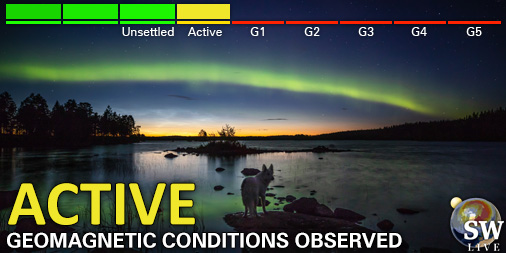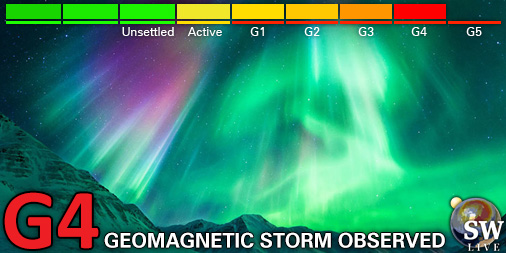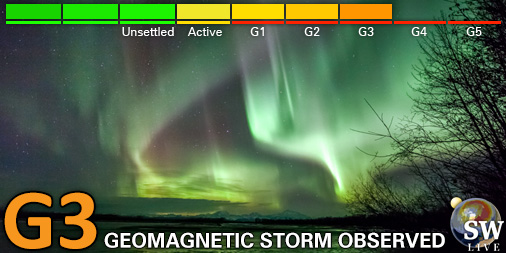Coronal hole faces Earth
Sunday, 25 August 2019 10:41 UTC

A small but interesting southern hemisphere coronal hole is facing our planet today.
While this coronal hole is fairly small, a quick look at the solar wind data from STEREO Ahead shows us some surprising numbers. The solar wind stream from this coronal hole arrived at STEREO Ahead late on 20 August and pushed the total strength of the interplanetary magnetic field (Bt) to almost 20nT. Even the Bz briefly dipped as low as -15nT. Impressive for such a small coronal hole. This was caused by the Co-rotating Interaction Region (CIR) which forms ahead of the high speed solar wind stream. The high speed solar wind stream itself reached a speed of about 600km/s on 21 August. Respectable numbers and that is good news for high latitude sky watchers here on Earth. It is expected that this coronal hole solar wind stream arrives at Earth on Tuesday, 27 August. Active geomagnetic conditions (Kp4) seem very much possible with these numbers either late on 27 August or on 28 August.
Sharp eyes see that another coronal hole is starting to rotate into view behind this coronal hole. That coronal hole should face Earth next week. The coronal hole solar wind stream from this second coronal hole arrived today at STEREO Ahead and also show us some promising numbers but more on that next week. All in all, we are in for a double coronal hole solar wind stream arrival next week. Interesting developments for high latitude sky watchers to keep an eye on.
Also, in case you missed it: a few days ago we made a post on Facebook explaining some issues with the DSCOVR space craft at the Sun-Earth L1 point. DSCOVR is NOAA's most modern space craft capable of supplying us with real time solar wind data but it is in a safe hold at the moment. That means it is not transmitting science data to Earth. We are now relying on the much older ACE space craft for real time solar wind data. Not ideal but it is how it is! We also updated the GOES page to feature SUVI imagery from GOES-17. Check out the GOES page here and our Facebook post can be found here.
Thank you for reading this article! Did you have any trouble with the technical terms used in this article? Our help section is the place to be where you can find in-depth articles, a FAQ and a list with common abbreviations. Still puzzled? Just post on our forum where we will help you the best we can!
Latest news
Latest forum messages
Support SpaceWeatherLive.com!
A lot of people come to SpaceWeatherLive to follow the Sun's activity or if there is aurora to be seen, but with more traffic comes higher server costs. Consider a donation if you enjoy SpaceWeatherLive so we can keep the website online!

Latest alerts
04:15 UTC - Geomagnetic activity
Active geomagnetic conditions (Kp4) Threshold Reached: 03:57 UTC
02:30 UTC - Hemispheric Power Index
The OVATION model predicts the Hemispheric Power Index to reach 50GW at 03:23 UTC
Wednesday, 16 April 2025
21:45 UTC - Geomagnetic activity
Minor G1 geomagnetic storm (Kp5) Threshold Reached: 21:36 UTC
21:00 UTC - Geomagnetic activity
Severe G4 geomagnetic storm (Kp8) Threshold Reached: 20:55 UTC
19:45 UTC - Geomagnetic activity
Strong G3 geomagnetic storm (Kp7) Threshold Reached: 19:25 UTC
Space weather facts
| Last X-flare | 2025/03/28 | X1.1 |
| Last M-flare | 2025/04/15 | M1.2 |
| Last geomagnetic storm | 2025/04/16 | Kp8- (G4) |
| Spotless days | |
|---|---|
| Last spotless day | 2022/06/08 |
| Monthly mean Sunspot Number | |
|---|---|
| March 2025 | 134.2 -20.4 |
| April 2025 | 120.5 -13.7 |
| Last 30 days | 118.3 -22.1 |






